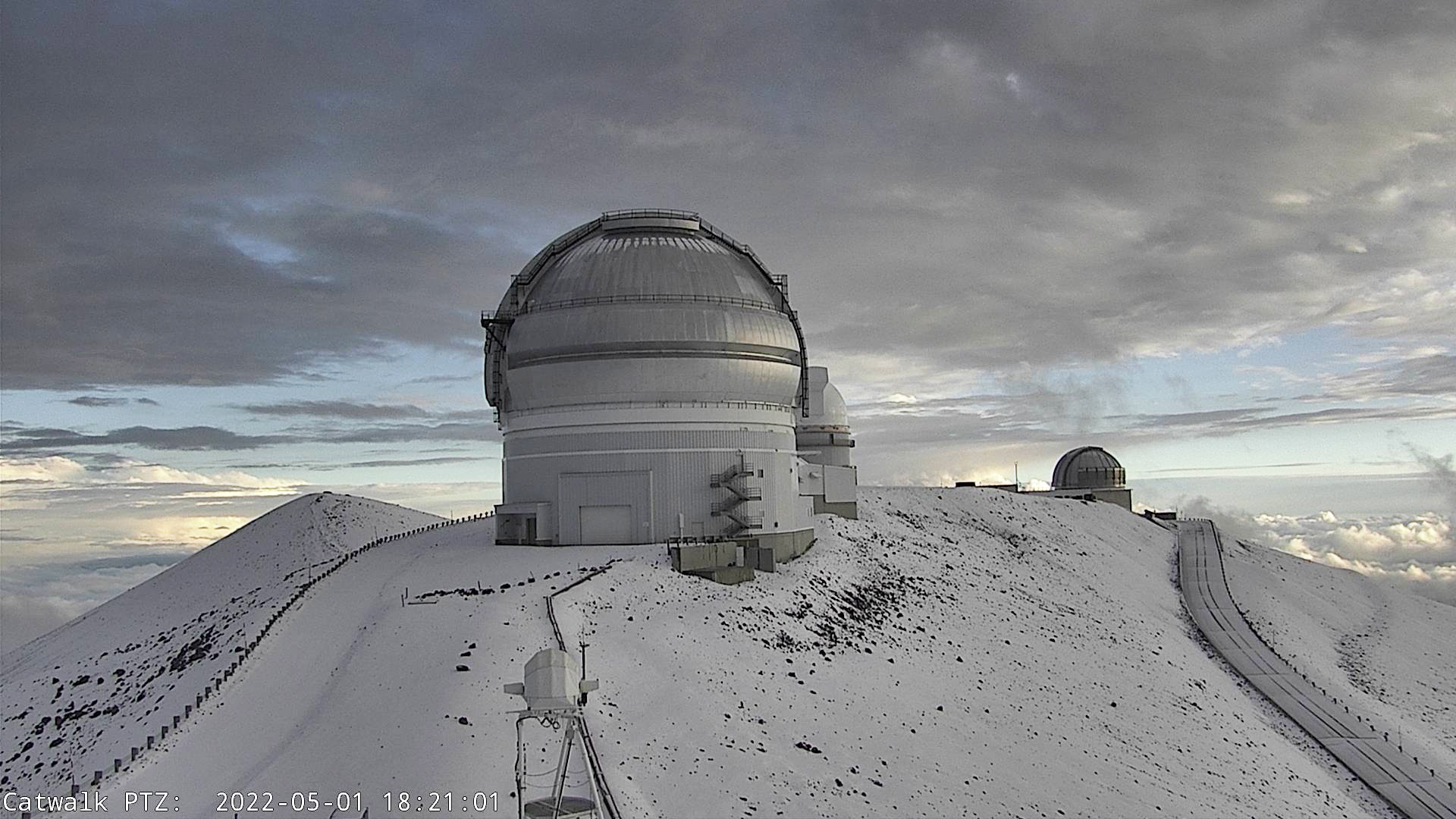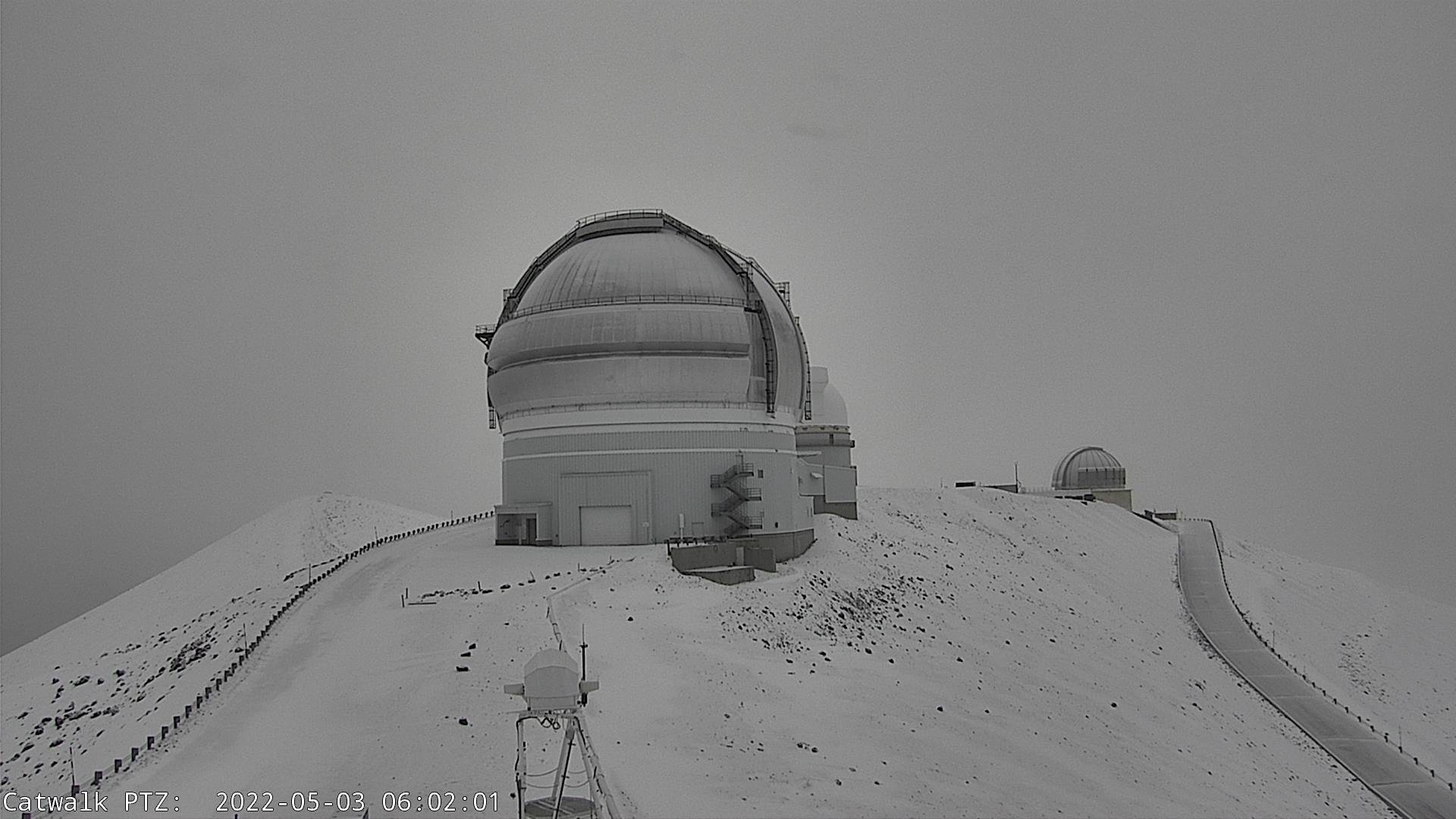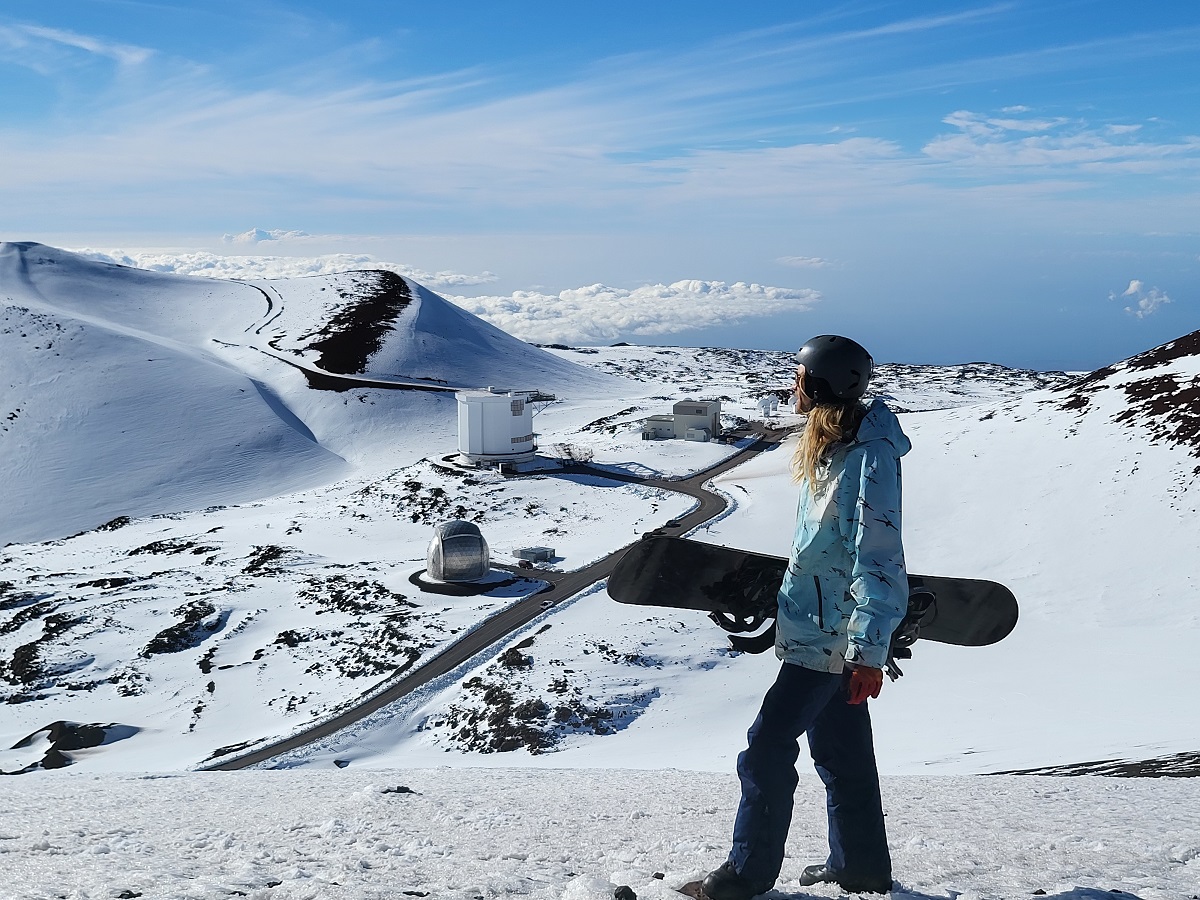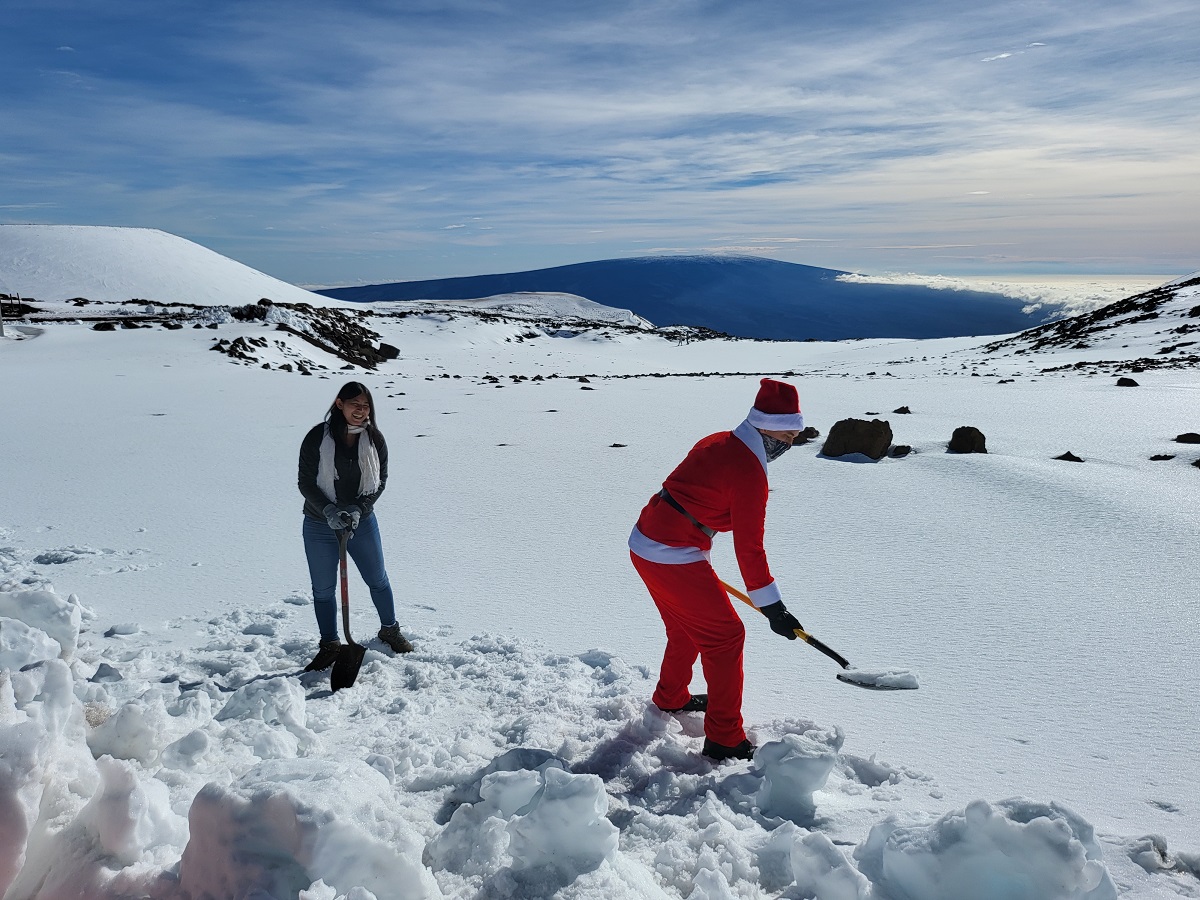
While large parts of the continental United States have seen an unusually cold April with record snow, May hasn’t been milder yet with more chilly conditions in the forecast across portions of the Rockies, the upper Plains, and the northeast. But another place seeing cold and snow is one you wouldn’t expect: Hawaii, which kicked off the new month with a snowstorm.
The National Weather Service office in Honolulu, Hawaii is continuing a Winter Weather Advisory for portions of Hawaii Island, also known simply as “The Big Island”, today through 6pm local time. The National Weather Service expects up to two inches of additional snow fall today on top of the snow that fell yesterday on the summit of Mauna Kea. While the Winter Weather Advisory warns that roads are “dangerously slick” and that visibility could drop to near-zero in snow and fog, the road to the summit of Mauna Kea is closed.
While most people don’t associate the tropical paradise Hawaii is known for with snow, they’re surprised to learn that it does snow in the winter due to the elevation of these volcanic peaks. Mauna Kea is the highest of the bunch at 13,803 feet. Maui’s Haleakala is much lower at 10,023 feet. Because of that difference, Hawaii Island will see snow more frequently than the lower Maui Island. Just one storm in January 2020 dropped 2-3 feet of snow on Hawaii Island and created snow drifts that were far deeper. Another storm last January brought snowboarders and skiers out to the mountain by the dozens.

Last December, the Aloha State was impacted by a significant storm system known locally as a “Kona Low”. The storm moved throughout the entire state, bringing heavy rains, blizzard conditions and heavy snow, 100-125+ mph winds, and extreme surf to the Big Island of Hawaii. Significant rains and winds impacted the other islands too, although only the Big Island saw significant accumulations of snow.
The Kona Low gets its name from the change in wind direction that occurs when such a storm moves over the Hawaii Islands. Hawaii is dominated by the trade winds that typically blow in from the northeast. However, the counter-clockwise flow around a Kona low located west of Hawaii results in southwesterly winds over the islands, which is typically the leeward or “Kona” side. Kona Lows are most common between October and April. These type of storms draw abundant moisture up from the warm tropical waters that surround Hawaii; when this moist flow interacts with the steep topography of the islands which helps to wring-out moisture, extremely heavy precipitation can fall. Because the wind flow around a Kona Low is atypical, flooding rains occur in places that may not ordinarily flood in tropical downpours that impact the islands from time to time. As this moisture taps into high elevation cold, it will often fall as exceptionally heavy snow on the higher peaks of Hawaii and Maui islands.

Hawaii-based National Weather Service meteorologist Tom Birchard wrote in the latest Oahu Forecast Discussion that the reason for this winter weather is an area of low pressure near Kauai. “Of greater significance to island weather the next couple of days is a closed low aloft that is currently just north of Kauai, and its associated trough aloft, now over the island chain. This low and trough will keep the island atmosphere destabilized this week as it moves slowly toward the west-southwest. It has already led to 8-10″ of rain over the last 48 hours in windward portions of Maui and the Big Island, where water levels in streams and rivers are elevated.”
While soaking rains will pour over lower elevations, there’s just enough cold air available at higher elevations for that precipitation to fall as snow, even though the calendar says its May.
“Deep moisture reaching the Big Island Summits, where temperatures are below freezing, has led to a wintry mix of precipitation, and a Winter Weather Advisory remains in effect through today,” wrote Birchard, adding, “As the cold core of the mid-level low drifts away to the west late Wednesday and Thursday, mid-level temperatures will warm, reducing the amount of thermodynamically-induced instability, and the potential for winter weather over the Big Island Summits.”

When snow covers the higher terrain of Hawaii, surfers trade in their surf boards for snow boards and skis and take advantage of the fresh snow on the Big Island’s summits. Due to the high altitude, not every can cope well with it and the altitude sickness it can bring. Because of that, some people will drive their pick-up trucks to the snow-covered area, shovel as much snow as they can into their truck, and return to the coast for snowball fights and snowman building at the warmer palm-tree lined beaches.
It’s not unleashed yet, but it will need to be soon: snow continues to accumulate in Hawaii! Driving this beast may be the coolest..or perhaps coldest job on Hawaii. With roads covered in snow on Mauna Kea & a Winter Weather Advisory up, they’ll need to be plowed soon. #HIwx pic.twitter.com/ydSlAbQPqI
— the Weatherboy (@theWeatherboy) May 3, 2022
People wishing to explore the fresh snowfall in Hawaii may need to wait to see it in person. The road to the summit of Mauna Kea closed to the public at the Visitor Information Station at an elevation of 9,200 feet. The Mauna Kea Rangers that manage the roadway said in a statement the roadway is closed due to “extensive fog, ice and snow on the road, high humidity with freezing temperatures and thunderstorms.” No date or time has been announced when the roadway will be plowed and/or reopened to the public. “Rangers will continue monitoring road and weather conditions and will reopen the road to the public when the conditions are safe.”